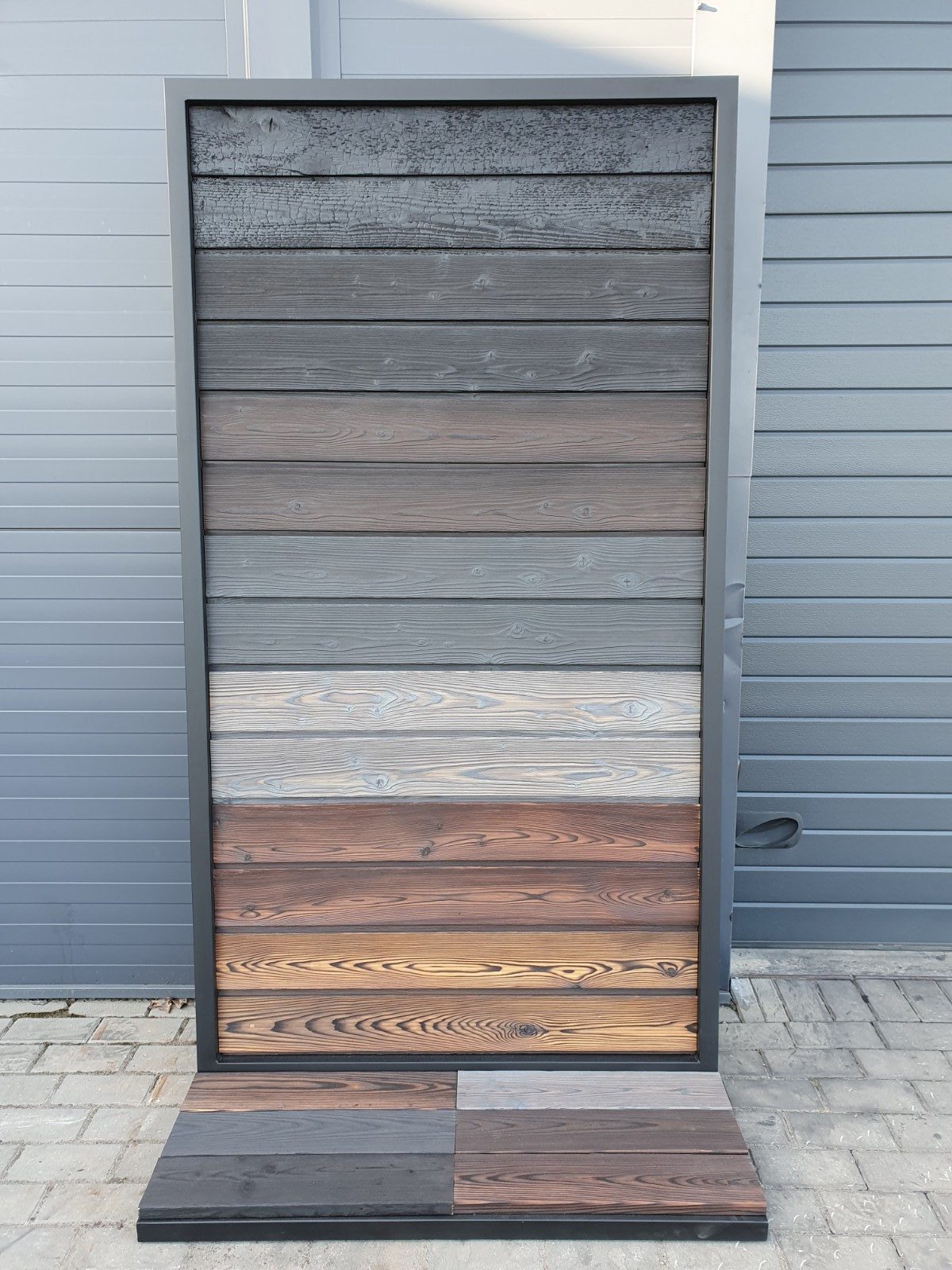The Beautiful Colors of Shou Sugi Ban Wood
The natural appearance of Shou Sugi Ban is visually amazing all by itself. Even so, charred wood is more versatile than you might imagine. Many brilliant colors are produced through dyeing the wood, giving your timber a unique and vibrant appearance.
Let’s look at the process of dying burnt wood, and the fascinating aesthetic benefits that it can bring to your home, business, or other wood projects.

Shou Sugi Ban Colors to Ignite Your Imagination
Charred wood (Yakisugi, or Shou Sugi Ban, depending on how you pronounce the particular kanji) is a traditional Japanese wood preservation method. The milled timber is carefully charred and then treated with oil. The result is a wood that looks beautiful and is also extremely resistant to the elements. Charred timber is ideal for siding, fencing, flooring, and other surfaces that suffer wear.
The Yakisugi process brings out the natural grain pattern of the wood, almost like a wood fingerprint. And while many people choose not to paint Yakisugi because it’s gorgeous on its own, you certainly can color it to fit your style. One of the benefits of burnt wood is that it accepts staining and paint very well.
Whether you’re building a new deck or installing a new kitchen floor, Shou Sugi Ban color options are limitless. From rich, deep charcoal, to a luxurious amber, the natural beauty of Yakisugi can be highlighted with the perfect color to enhance any ambiance.
How to Dye Shou Sugi Ban
The process for dyeing Shou Sugi Ban is straightforward, much like Yakisugi in general. However, there is no substitute for experience. A wrong move can cause you not to achieve the desired color result or ruin the wood in severe cases. For anyone attempting this yourself, we recommend that you practice on some non-essential pieces of timber first.
-
Surface Preparation
The timber that you intend to dye should already be charred. If you try to stain the wood with your desired color first before you char it, the charring will alter the stain color. Once you have charred the wood, you will want to sand it lightly. The amount will change somewhat depending upon the type of wood, but 150 is a rough average.
-
Applying the Dye
At this point, you will want to apply the dye to the wood. While there are many methods, a reasonably simple way is to mix two parts acetone with one part liquid alcohol dye. Let it sit overnight; then, you can begin applying.
Saturate a cloth in your dye mixture and begin scrubbing it on the wood. Try to make everything as even as possible. You will likely need to touch up certain spots with a small paintbrush, and a second or third coat may be required.
Afterward, you can apply one coat of pure acetone to bring out the contrast a bit more on darker colors.

Trust the Pros to Have Repose
While you can try dyeing your Shou Sugi Ban yourself, as we’ve said, there’s no substitute for skilled professionals. And with expert artisans, you will have confidence that your wood will be perfect every time! Degmeda is your source for traditional Japanese Shou Sugi Ban products and services. You can find a large selection of timber, including Accoya, larch, pine, spruce, and cedar, each with its own unique look and style.
Our friendly and professional staff can help you decide which type of wood is perfect for you, and craft the most exquisite wood you have ever seen! So don’t settle for less when you can have the very best! Buy charred wood that has been expertly crafted in the traditional Japanese Yakisugi style today!